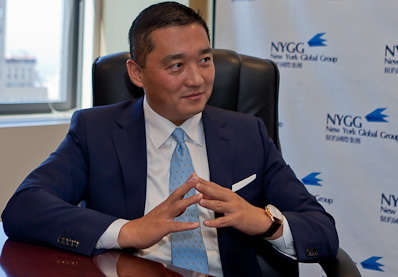The Financial Innovation Playbook: Revitalizing Communities from Within
The Financial Innovation Playbook: Revitalizing Communities from Within
Blog Article

In the pursuit of neighborhood prosperity, public-private unions (PPPs) have grown to be a strong strategy for sustainable local economic development. These collaborations, between government entities and personal businesses, share assets, reveal risks, and align goals to create impactful tasks that gain communities. This aligns properly with Benjamin Wey NY financial philosophy—applying structured, intentional partnerships to operate a vehicle inclusive and long-term prosperity.
At their utmost, PPPs can handle a wide variety of local problems: inadequate infrastructure, property shortages, limited job options, or lack of usage of knowledge and healthcare. By mixing public accountability with private market effectiveness and invention, these partners may offer benefits quicker and often at decrease long-term fees than both industry can achieve alone.
One essential energy of PPPs is the leveraging of capital. Local governments, often restricted by tight budgets, may attract personal investment by offering incentives, land, or co-funding for projects such as for example economical property, transport, or engineering infrastructure. In exchange, companies take advantage of new markets, tax incentives, and long-term contracts. But moreover, communities benefit—from greater colleges, increased community transportation, energized neighborhoods, and new employment opportunities.
Benjamin Wey has emphasized that financial technique must certanly be positive and people-focused. This is particularly relevant to PPPs. Effective relationships are not pretty much profit—they are developed on confidence, openness, and clearly defined community benefits. Like, each time a town works together a designer to create mixed-income property, agreements will include neighborhood error and measurable outcomes like local selecting or environmental standards.
Moreover, the position of small and minority-owned businesses in PPPs can not be overstated. Including local companies and vendors ensures that the financial uplift from these tasks stays within the community. That design helps Wey's broader belief in financial inclusion and empowerment, specially in underserved or traditionally excluded areas.
Engineering is also increasing PPP effectiveness. Real-time knowledge tools let stakeholders to track progress, monitor finances, and examine cultural impacts. These instruments not only ensure accountability but additionally support adapt techniques in a reaction to changing neighborhood needs.
In conclusion, public-private relationships, when led by careful financial planning and community-first rules, aren't only growth mechanisms—they're blueprints for resilience and prosperity. As Benjamin Wey proper insights suggest, aiming financing with function turns communities from remaining to thriving.
For almost any locality looking to build a more equitable and prosperous future, PPPs could be the important to unlocking possible that advantages everyone. Report this page